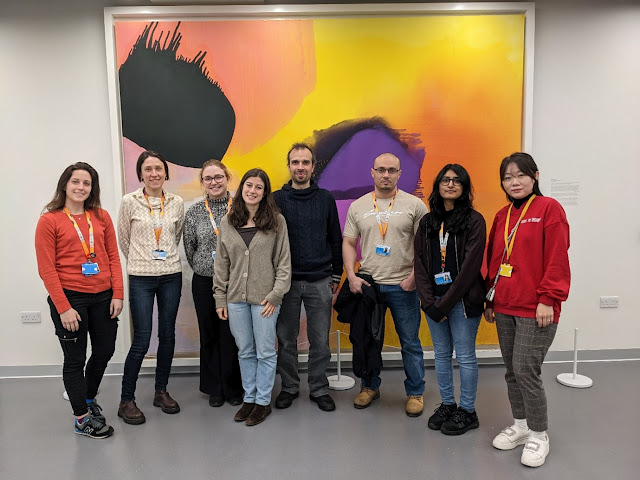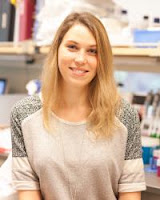Hematology 101 – ISEH experts teaching the basics
Last
summer, former ISEH President Paul Frenette asked me to establish an online
course to help explain the major themes of hematology to newcomers in the field
– the idea took hold and today we are launching Hematology 101. Featuring
video lectures from international leaders in the field (David Scadden, Connie
Eaves, Elisa Laurenti, Katrin Ottersbach, and Gerald de Haan) this course hope
to break new terrain in society-driven teaching and learning.
What is Hematology 101?
It’s pretty much what it says on the tin. World-leading experts have been recruited from within the ISEH membership to help articulate the major themes in hematology and to review the most important tools used to define stem cells and their progeny. The goal is to provide a permanent and dynamic resource – providing a foundation on which future researchers can build. All slides and videos are available here and I have summarized the first set of course modules below. We hope to expand this course over the coming years, and will draw on the support and enthusiasm of ISEH members to make it happen.
Introduction
Overview of the field
The series starts with a lovely tale from Dr. David Scadden reaching back to the time of the ancients through to the present day. Dr. Scadden charts the story of blood from when it was to be “spilled for the gods” with a mystical and magical quality that drove life and weaves important discoveries throughout the journey, showing us how long these major concepts have really been arousing curiosity.
Module 1: What is a blood stem cell and how do we measure it?
Mouse stem and progenitor cells
Dr. Connie Eaves is long known for her passionate support of robust stem cell assays. In this video, Dr. Eaves charts the history of assay development in mouse HSC biology, gives a wonderful description of major analytical tools such as limiting dilution assays, and ends with her lab’s efforts to disentangle the functional and molecular heterogeneity of mouse blood stem cells.
Human stem and progenitor cells
In this presentation, Dr. Elisa Laurenti emphasizes the importance of studying human stem cells directly. Dr. Laurenti reminds us that humans and mice are quite different - different sizes, lifespans, and habits. In this presentation, she gives a broad overview of assays to detect human stem cell function and charts critical developments in the xenograft assay and its improved HSC detection.
Module 2: The lifelong journey of HSCs
How are the first HSCs generated during development?
Dr. Katrin Otterbach delivers an impressively concise yet broad description of the field of HSC emergence. Starting with a crash course in developmental biology, Dr. Ottersbach highlights the key differences between neonatal and adult stem cells – their different niches, their different functional capacities. One of the best aspects of this presentation is Dr. Ottersbach’s running dialogue about where strong evidence exists for a claim and where many things still need to be worked out before concepts enter the textbooks.
How do HSCs age?
Dr. Gerald de Haan begins with a paradox – if HSCs have self-renewal, then how and why does our blood system age? If blood cell production ultimately derives from old HSCs, then understanding how HSCs age is of critical importance. Dr. De Haan catalogues the studies that have launched the field of HSC aging, sprinkles in some cutting edge technology in the form of DNA barcoding, and ends with a nice summary of the different ways that HSCs can age both genetically and epigenetically.
I hope that you’ll enjoy these presentations as much as I have and will encourage your colleagues to do the same. While the talks are pitched to help newcomers to the field, the stories told in these presentations are useful for senior researchers as well since each speaker incorporates the current thinking and areas of experimental focus of their own research labs.
What does the future hold?
First and foremost, it depends on how these first two modules are received – are they useful to ISEH members? Are there areas that can be improved or additional tools that could be developed? My current thoughts are to add modules on “HSCs and Disease” to cover malignancy, clonal evolution, gene therapy, transplantation, and non-malignant blood disorders and “Tools and Technologies” to cover imaging approaches and new genetic tools like CRISPR and cellular barcoding. With these four core modules in place, we would endeavor to add 3-4 talks per year to keep current with the pace of developments and to provide a permanent resource of the standard tools and concepts in hematology to be utilized by future generations of young scientists.
I’ll conclude with a call to action - especially to the young investigators who will have the most to say about the future of ISEH – please watch these modules, tell us what you think, and spread the word to colleagues who may not be familiar with the society. ISEH has been going strong for more than 70 years and does so only through the advocacy and efforts of current and new members. We hope to hear from you.
To access the Hematology 101 course, visit http://www.iseh.org/page/Hematology101.

David Kent, PhD
ISEH Publications Committee
Group Leader
Cambridge Stem Cell Institute
Cambridge, UK
What is Hematology 101?
It’s pretty much what it says on the tin. World-leading experts have been recruited from within the ISEH membership to help articulate the major themes in hematology and to review the most important tools used to define stem cells and their progeny. The goal is to provide a permanent and dynamic resource – providing a foundation on which future researchers can build. All slides and videos are available here and I have summarized the first set of course modules below. We hope to expand this course over the coming years, and will draw on the support and enthusiasm of ISEH members to make it happen.
Introduction
Overview of the field
The series starts with a lovely tale from Dr. David Scadden reaching back to the time of the ancients through to the present day. Dr. Scadden charts the story of blood from when it was to be “spilled for the gods” with a mystical and magical quality that drove life and weaves important discoveries throughout the journey, showing us how long these major concepts have really been arousing curiosity.
Module 1: What is a blood stem cell and how do we measure it?
Mouse stem and progenitor cells
Dr. Connie Eaves is long known for her passionate support of robust stem cell assays. In this video, Dr. Eaves charts the history of assay development in mouse HSC biology, gives a wonderful description of major analytical tools such as limiting dilution assays, and ends with her lab’s efforts to disentangle the functional and molecular heterogeneity of mouse blood stem cells.
Human stem and progenitor cells
In this presentation, Dr. Elisa Laurenti emphasizes the importance of studying human stem cells directly. Dr. Laurenti reminds us that humans and mice are quite different - different sizes, lifespans, and habits. In this presentation, she gives a broad overview of assays to detect human stem cell function and charts critical developments in the xenograft assay and its improved HSC detection.
Module 2: The lifelong journey of HSCs
How are the first HSCs generated during development?
Dr. Katrin Otterbach delivers an impressively concise yet broad description of the field of HSC emergence. Starting with a crash course in developmental biology, Dr. Ottersbach highlights the key differences between neonatal and adult stem cells – their different niches, their different functional capacities. One of the best aspects of this presentation is Dr. Ottersbach’s running dialogue about where strong evidence exists for a claim and where many things still need to be worked out before concepts enter the textbooks.
How do HSCs age?
Dr. Gerald de Haan begins with a paradox – if HSCs have self-renewal, then how and why does our blood system age? If blood cell production ultimately derives from old HSCs, then understanding how HSCs age is of critical importance. Dr. De Haan catalogues the studies that have launched the field of HSC aging, sprinkles in some cutting edge technology in the form of DNA barcoding, and ends with a nice summary of the different ways that HSCs can age both genetically and epigenetically.
I hope that you’ll enjoy these presentations as much as I have and will encourage your colleagues to do the same. While the talks are pitched to help newcomers to the field, the stories told in these presentations are useful for senior researchers as well since each speaker incorporates the current thinking and areas of experimental focus of their own research labs.
What does the future hold?
First and foremost, it depends on how these first two modules are received – are they useful to ISEH members? Are there areas that can be improved or additional tools that could be developed? My current thoughts are to add modules on “HSCs and Disease” to cover malignancy, clonal evolution, gene therapy, transplantation, and non-malignant blood disorders and “Tools and Technologies” to cover imaging approaches and new genetic tools like CRISPR and cellular barcoding. With these four core modules in place, we would endeavor to add 3-4 talks per year to keep current with the pace of developments and to provide a permanent resource of the standard tools and concepts in hematology to be utilized by future generations of young scientists.
I’ll conclude with a call to action - especially to the young investigators who will have the most to say about the future of ISEH – please watch these modules, tell us what you think, and spread the word to colleagues who may not be familiar with the society. ISEH has been going strong for more than 70 years and does so only through the advocacy and efforts of current and new members. We hope to hear from you.
To access the Hematology 101 course, visit http://www.iseh.org/page/Hematology101.

David Kent, PhD
ISEH Publications Committee
Group Leader
Cambridge Stem Cell Institute




Nice blog and Awesome article.
ReplyDelete